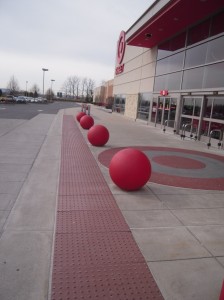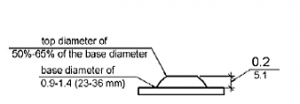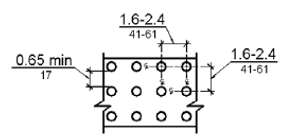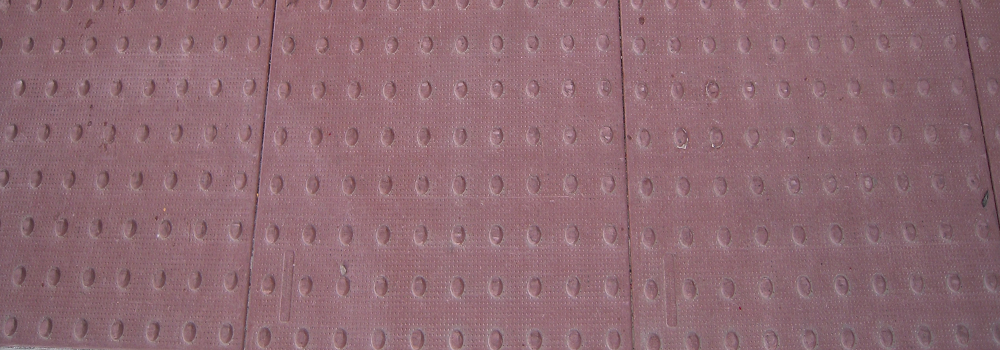Have you ever noticed those small, raised dots on the sidewalk as you have walked up to a building and wondered why they are there?
Those small, elevated domes are known as detectable warnings and they serve a significant purpose.
The United States Access Board  defines detectable warnings as the distinctive surface pattern of domes, which can be detected by a cane or underfoot to alert people with vision impairments of an approaching street crossing or hazardous drop-off. In order to accommodate the needs of all pedestrians, it is important that sidewalks are designed in a standard way to help translate safety information beyond just sight. Detectable warnings can be distinguished visually, by their color differentiation from the sidewalk, or by the sound of a cane making contact with the textured surface.
defines detectable warnings as the distinctive surface pattern of domes, which can be detected by a cane or underfoot to alert people with vision impairments of an approaching street crossing or hazardous drop-off. In order to accommodate the needs of all pedestrians, it is important that sidewalks are designed in a standard way to help translate safety information beyond just sight. Detectable warnings can be distinguished visually, by their color differentiation from the sidewalk, or by the sound of a cane making contact with the textured surface.
The Americans with Disabilities Act of 1990 (ADA), adapted new regulations in 2010 known as the Standards for Accessible Design. These 2010 Standards set forth minimum requirements for newly designed and constructed or altered State and local government facilities, public accommodations, and commercial facilities to be readily accessible to and usable by individuals with disabilities. They established a standard criteria for the size, shape, and color of detectable warnings.
2010 ADA Standards for Accessible Design – 705 Detectable Warnings
705.1 General – Detectable warnings shall consist of a surface of truncated domes.
705.1.1 Dome Size – Truncated domes in a detectable warning surface shall have a base diameter of 0.9 inch (23 mm) minimum and 1.4 inches (36 mm) maximum, a top diameter of 50 percent of the base diameter minimum to 65 percent of the base diameter maximum, and a height of 0.2 inch (5.1 mm).
705.1.2 Dome Spacing – Truncated domes in a detectable warning surface shall have a center-to-center spacing of 1.6 inches (41 mm) minimum and 2.4 inches (61 mm) maximum, and a base-to-base spacing of 0.65 inch (17 mm) minimum, measured between the most adjacent domes on a square grid.
705.1.3 Contrast – Detectable warning surfaces shall contrast visually with adjacent walking surfaces either light-on-dark, or dark-on-light.
If the detectable warnings do not meet code, they will be less effective in warning pedestrians with visual impairments and/or could lead to potential trips and falls. The proper size and spacing between the domes allow for canes and wheelchairs to safely travel over the textured surface. This is why the planning, design, construction, and installation process are so important: because detectable warnings are only beneficial if they convey a unique message and are in a standardized location.






